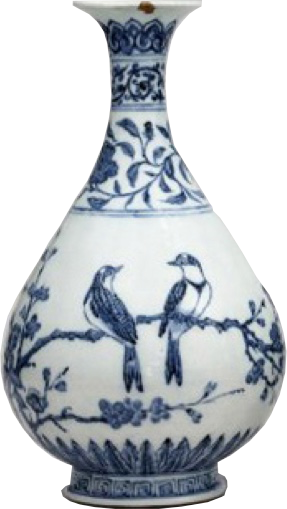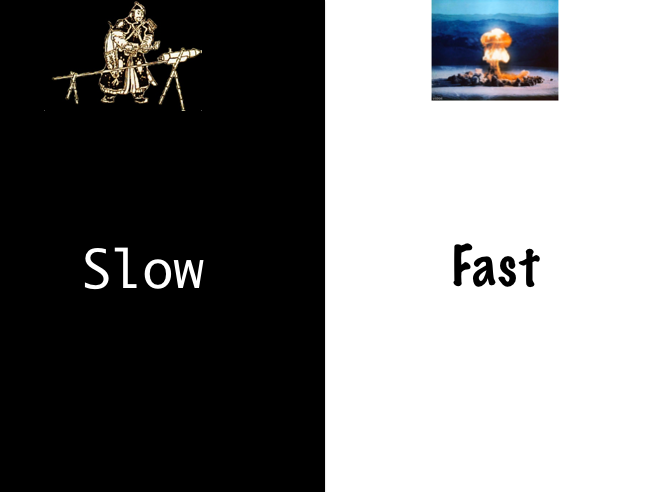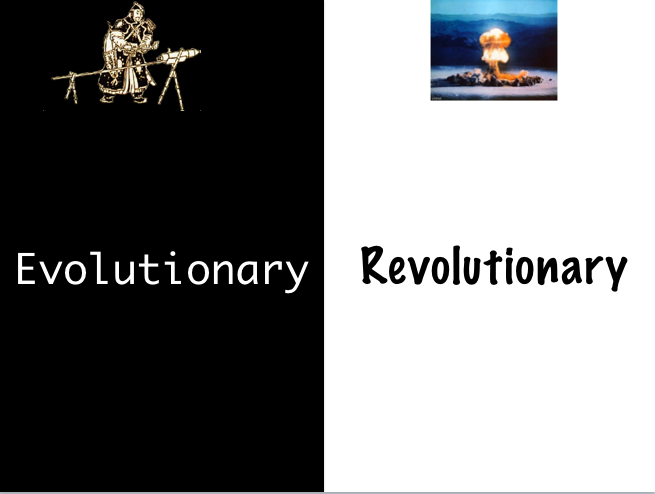The Germans have a great word: Weltangschauung. The quick-and-dirty translation is “world view”, but the concept is much deeper. It’s an entire way of perceiving the universe, a cultural mindset that organizes experience and fits it into a system that works pretty well. Of course, no intellectual system, no way of perceiving reality is perfect; every weltangschauung has its clumsy aspects.
Inasmuch as reality is terribly complicated, there are lots of different weltangschauungs that work well, and in fact we have observed this in human societies. While the emotional foundations of the human psyche are universal, the cultural foundations are subject to wide variance. Ideas that seem obvious and natural in one weltangschauung seem weird and unnatural in another.
We can see this in languages. Few people realize how difficult it can be to successfully translate material in one language into another. When entirely different weltangschauungs are at play here, it is all but impossible to properly translate. One must simply learn the entire foreign language, along with all the culture on which it is based, in order to understand it.
This brings me to Joseph Needham, a British scientist who became fascinated with Chinese science and plunged into it with both feet. He taught himself to read Chinese, and plowed through reams of ancient Chinese literature, looking to references to Chinese science and technology. He recruited a team of scholars to review and condense all that information into a series of books entitled “Science and Civilization in China”.
A Westerner would find it difficult to appreciate the magnitude of Mr. Needham’s project. The Chinese have accumulated a stupendous library of textual material dating back more than two thousand years. Perhaps you can appreciate it by comparing it to classical Roman and Greek literature. Could you imagine reading every single book we have from classical times. There’s a lot of stuff from hundreds of authors. It would take you years and years to go through everything.
But wait! We don’t have everything written in classical times. The Great Library of Alexandria was the greatest repository of classical writings, containing literally millions of manuscripts. It was all destroyed in Late Antiquity. Modern scholars estimate that we have preserved only a small fraction of the knowledge that the ancient Romans and Greeks had learned.
If you think that learning all the classical literature would be difficult, imagine how much bigger a job it would be if we still had the stuff from the Great Library of Alexandria.
The Chinese literature is much bigger than that.
The project continues, and so far it has produced 27 books grouped into seven “volumes”.
These books are only for scholars; no normal person would have the patience to plow through the pile. Moreover, each volume costs several hundred dollars, so this is not a book for general readers. { February 2021: I found a downloadable version of Needham’s work on the Internet, but I can no longer find it. I have read a goodly portion of the material I downloaded.} There is, however, a condensation of the volumes entitled The Genius of China by Robert Temple. This condensation was not directly supervised by Mr. Needham and is a bit embarrassing for a scholar of Mr. Needham’s quality.
The entirety of Temple’s book can be expressed in a simple statement: “Whatever it was, China discovered it about 2,000 years before Europe.” I am not exaggerating — the book lists 100 discoveries or inventions each of which, it claims, was discovered in China centuries or even millenia before the Europeans discovered it. Among these supposed discoveries are modern geology, diabetes, using algebra in geometry, underwater salvage operations, the first cybernetic machine, masts and sailing, the parachute, and the decimal system. These claims are manifestly preposterous.
Diabetes
Although Mr. Temple entitles this section “Diabetes”, and discusses Chinese literature on diabetes, the only explicit claim of priority is that Chinese scholars discovered that the urine of diabetics tastes sweet — and this was in the seventh century CE. The Egyptians were the first to describe diabetes 2,200 years earlier, in 1552 BCE. They also noted that ants seemed attracted to the urine of diabetics.
Underwater salvage operations
This turns out to be nothing more than using divers to attach ropes to sunken objects, and then using boats to pull the objects up.
The essentials of the steam engine
This is surely the wildest claim of all. Mr. Temple describes a device by which a water wheel drove a rotary crank which in turn pushed a piston back and forth. This, Mr. Temple claims, is the essential operation of the steam engine, only in reverse. He seems unaware of the fact that steam is the driving force in a steam engine.
The first cybernetic machine
Here Mr. Temple describes an application of a differential gear. The differential gear is what makes it possible for your car’s engine to drive both front wheels even when, going around a corner, one wheel must travel a greater distance than the other. It’s a useful idea, and the Chinese definitely invented it, but that doesn’t make it a “cybernetic machine”. Their application was a two-wheeled cart with a central vertical axle driven by a differential gear connected to each of the two wheels. The idea was this vertical axle remained stationary no matter how the cart was rotated. It was certainly a clever toy, but utterly useless. Mr. Temple’s suggestion that it could help travelers from losing their way is absurd; it doesn’t take a lot of expertise to figure out that the sun rises in the east and sets in the west. True, long periods of thick clouds make this impossible, but dragging a heavy cart along with you is not worth the effort.
What’s truly outrageous about this is that this “cybernetic machine” was invented in the third century CE, whereas the Antikythera Device was invented in Greece four centuries earlier, and was capable of complex calculations about the motions of the planets and eclipses.
But these absurdities are not the central point of this essay. Instead, I wish to argue that China never had any science until the nineteenth century. The point hinges on a subtle but crucial factor in science, and that subtle factor is what this essay concerns.
Gunpowder
To illustrate the point, let’s look closely at the Chinese invention of gunpowder. There is no question that they did invent gunpowder — but the way in which they invented it shows the difference between science and what the Chinese did.
First, let us dispense with the standard story of how the Chinese invented gunpowder. This is based on a manuscript from a Chinese scholar describing how an earlier scholar, while searching for a potion that would confer immortality, happened upon gunpowder. That’s what the book says.
I am surprised that anybody could take this story seriously. Think about it: if you were trying out a new potion, would you set fire to it? The notion is preposterous. Gunpowder has three main components. The first is charcoal. Have you ever tasted charcoal? The second constituent is sulfur, which is even worse that charcoal. It mixes with the water in saliva to form sulfuric acid. Why would anybody think that drinking sulfuric acid might confer immortality? It gets worse — the third component of gunpowder is potassium nitrate, which was usually obtained by digging underneath piles of dung. Not what I would call health food.
There’s a much simpler and, I believe, better explanation of how the Chinese invented gunpowder. It starts with pottery. From earliest history, the Chinese had the finest pottery in the world. This was not because the Chinese were smarter or more creative than anybody else; it was due to three factors:
1. China had the largest population and the largest economy in the world.
2. China unified early and enjoyed peace for most of its history.
3. The long periods of peace gave the rich plenty of time to capture a big share of China's economic output.
These three factors together mean that there was a big demand for high-quality porcelain. That big demand generated a huge porcelain industry with tens of thousands of workers.
At this point, I’m going to invoke a variation on the “million monkeys with a million keyboards” line. No, the Chinese weren’t monkeys; they were in fact pretty smart. And they knew how important it was to get a competitive advantage by making a superior product. They quickly learned that the single most important factor in attaining the highest quality product was the temperature of their kilns. With higher temperatures, they could make porcelain with thinner walls and better glazes.
It didn’t take long to realize that you could get higher temperatures with charcoal than with wood; almost everybody all over the world figured that out early on. The second trick was to get more insulation around the kiln; with more insulation, more heat would be retained inside the kiln. The third trick was to supply lots of air to the furnace with a bellows. The Chinese eventually started building kilns by excavating large holes in hillsides:
The toughest problem was the fuel for the fire. Charcoal worked well, but if they could get it to burn faster, they could obtain higher temperatures. For centuries, Chinese potters experimented with different fuel mixtures. This turned out to offer a side benefit: some additives added an interesting texture or undertone to the products.
If you have tens of thousands of Chinese experimenting with all manner of chemical additives over the course of centuries, you’ll get millions of experiments gone wrong, and a few that actually yield results. They eventually settled on adding small amounts of sulfur and saltpeter (potassium nitrate). This greatly speeded up combustion, permitting hotter fires producing better results:

If a little saltpeter is good, then more must be better, right? Well, that didn’t work out so well: the stuff burned so fast the it spat out gas in all directions, making it impossible to stoke the fire with additional fuel. But at this point something important happened: recruitment.
The process I have described so far is a direct analogue to biological evolution: lots of trial and error leading to lots of failures, with the occasional incremental step forward. But at this point in the tale, another component of biological evolution came into play: recruitment. This is the process by which an existing organ turns out to be good at some completely different task, which in turn represents a step forward. The classic example of this is the panda’s thumb, which pandas use to strip the leaves off of bamboo. The thing is, it’s not a thumb: the panda’s original thumb is still in place. This new “thumb” is actually an expanded version of one of the wrist bones. That bone was originally used only to help manipulate the paw, but it was recruited to a completely new task. There are lots of examples of this in the biosphere. The three tiny bones inside each of your ears were original part of a complex fish jaw, but once critters got onto the land, those bones were bypassed, shrank, and then got recruited for the now-useful ears.
The same thing happened with gunpowder. The people who made the “too fast burning” fuel realized that it could be put to other uses: bombs, rockets, and guns. The bombs were initially firecrackers, but later the Chinse developed some larger ones for warfare. Rockets were probably the first application of this new (and rather weak) gunpowder. And the Chinese developed a kind of gun, called a fire lance, which shot out a bundle of arrows. It wasn’t much of a gun, but then again, the Chinese didn’t fight a lot of battles, so it was adequate to the task. The Chinese also made a kind of cannon, but again, it wasn’t particularly useful.
Objection!
“Hold on!” my evil twin cries. “If this is how it really happened, then why did the Chinese lie about it and say that it was invented by somebody looking for an immortality potion?” To understand the answer, you must first grasp a crucial fact about Chinese society. It was a rigorously hierarchical society. Everybody had their place in it. There was one special exception: any child with the proper education could take the special tests, and, if he did well, could become one of the scholarly elite: a mandarin. With that certification, a man could rise high in Chinese society. These scholars were rightly proud of their status; it took a LOT of work to pass the examinations.
But they also looked down on other classes. Merchants were regarded as little better than scum, because in the eyes of the mandarins, merchants produced nothing; they were leeches on society. Farmers occupied the next rung on the ladder; they grew food, but they weren’t very bright. Next came artisans — the people who manufactured pottery, iron products, and so on. These were respected for their talents, but they were still far below the scholarly elite in rank.
So what happens when an artisan discovers gunpowder? Well, he doesn’t. The local mandarin takes charge, directs some further experiments, notifies other scholars, and takes all the credit for the discovery. After all, illiterate artisans can’t be credited with discoveries; to be credible, it must come from a scholar. Hence the cover-up story that gunpowder was discovered by a scholar.
Back to evolution
Here’s where the biological evolution analogy comes back. Because gunpowder could win battles, the technology quickly spread across Eurasia, and the Europeans got their hands on it. Now, the Europeans did a great deal more fighting than the Chinese, and so the evolutionary pressure for improving gunpowder and firearms was much higher in Europe than in China. The inevitable result was that European firearms technology quickly outstripped China’s. When the Ottoman sultan Mehmet II captured Constantinople in 1453, he used huge cannons built for him by Europeans — cannons that were far ahead of anything in China. It wasn’t because the Europeans were any smarter than the Chinese, it was because they had greater need of better firearms.
We can reduce this long story to a simple summary: the development of gunpowder was an evolutionary process in which a long sequence of trial and error eventually stumbled upon the result. It does not in the slightest indicate any special intelligence on the part of the Chinese (or the Europeans who further developed the technology). It was just as intelligent as the evolution of the ear, only much faster.
Albert Einstein
Now let’s jump to a completely different subject, which I will bring to bear later. Let’s talk about Albert Einstein. He was really smart. He was also a scientist.
The difference between Mr. Einstein and the Chinese scholars of antiquity is that Mr. Einstein wanted to understand the universe, while the Chinese scholars wanted to manipulate it. Chinese scholars did not investigate phenomena because they were merely interesting; they explored ways to make the world a better place.
The difference between Chinese technology and Western science shows up in the concept of a model. A model is an intellectual reduction of a phenomenon to its fundamental mathematical components. A model strips away everything that doesn’t enter into the calculations made while using the model.
The use of models differentiates “hard science” from “soft science”. You can still do science without models, but it’s a lot harder to get anything useful out of it.
The value of models is that they can be applied to situations that were not initially anticipated. And here is where Albert Einstein enters the picture. Einstein was interested in the nature of light. Experiments had shown all sorts of odd things about light, things that did not appear to make any sense. The worst of these was the Michelson-Morley experiment, carried out in the 1880s. Michelson and Morely set up an extremely sensitive apparatus that allowed them to, in effect, measure the speed of light. They used this measure the speed of light at different times of the year. Now, during the course of a year, the earth is constantly changing direction, so the speed of light we experience should vary over the course of a year as the earth’s motion changes. But it didn’t! No matter what direction the earth moved, the speed of light was always the same.
This tickled Einstein’s fancy, and he asked, “What if the speed of light is always the same for everybody, no matter what their state of motion is?” This seemed like a stupid question. Suppose, for example, that two rockets are approaching each other. Each one is moving at half the speed of light. So their combined motion should be equal to the speed of light, right? Wrong! Einstein showed that, if the speed of light is the same for everybody, no matter what their velocity might be, then all sorts of weird results ensue. Each guy sees the other fellow’s clock running more slowly than his own. Each guy sees the other guy somewhat flattened in the direction of motion. I know, it doesn’t make any sense, does it?
But the really crazy thing that Einstein figure out was that each guy would see the other guy as having more mass than he really did, and the closer he got to the speed of light, the more massive he seemed. Ergo, if you’re in a super rocket, and you’re accelerating, then every bit of extra speed also adds a bit of extra mass. In other words, the energy of motion yields mass. Reversing the equation and bringing it all the way up, Einstein came up with the famous formula:

It shows that energy and mass are the same thing. This in turn means that mass can be converted into energy, and kicked off a new direction of research. In 1938, scientists in Berlin actually managed to convert a tiny amount of mass into a tiny amount of energy using uranium. That in turn led to the Manhattan Project, which built the first atomic bomb.
Now at last I can bring my point to bear. The Chinese invented gunpowder by an evolutionary process: lots of trial and error with occasional incremental steps forward. The verb “invented” doesn’t quite fit the Chinese development of gunpowder; “discovered” is a better verb to use. But the Americans did invent the atom bomb. The difference between the two processes is that the American effort was the result of an analytical process. They realized that theory predicted the atom bomb, and based on theory alone, they invested billions of dollars (in current dollars), and produced the atom bomb in just three years. The Chinese took centuries to discover gunpowder.
This is important: the Western approach relied on rationalism, logic, mathematics, and analytical reasoning. The Chinese approach relied on random trial and error. Because the Chinese economy was so much bigger, and there were so many Chinese artisans, it was inevitable that they would stumble onto better technology. But Chinese technological superiority, which lasted until maybe 1600, was not due to science; it was due to trial and error carried out on a vast scale.
China did not have any genuine science until it learned science from the West. They had excellent technology, but did not have the mental tools — rationalism, logic, and analytical thinking — to build science. Fortunately, after Mao Tse-Tung took power, he set China to work rapidly catching up and now China’s scientific establishment is just as good as any other in the world.
The following slides from my lecture on this subject illustrate the differences clearly:





Table of Contents | Bibliography | Sources
